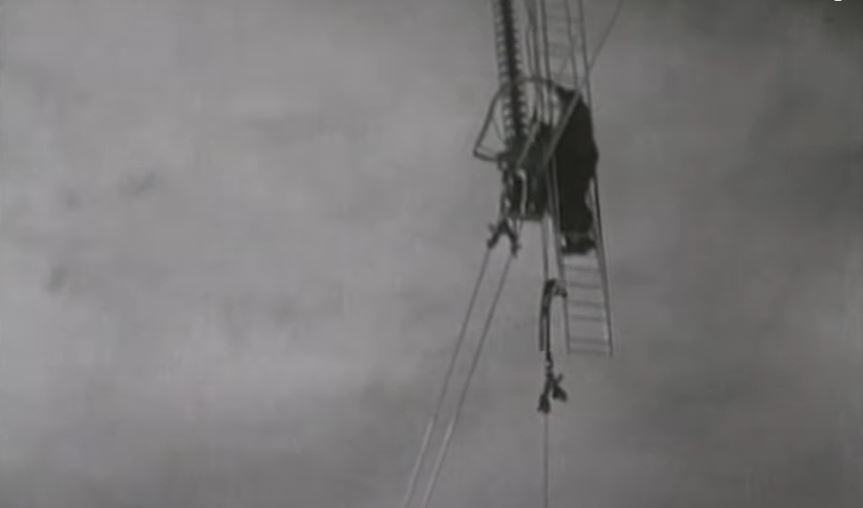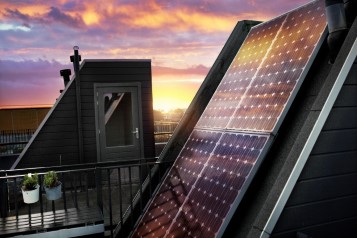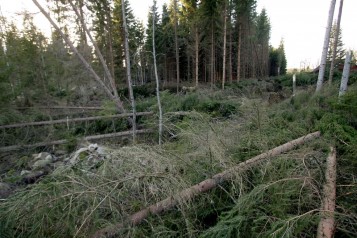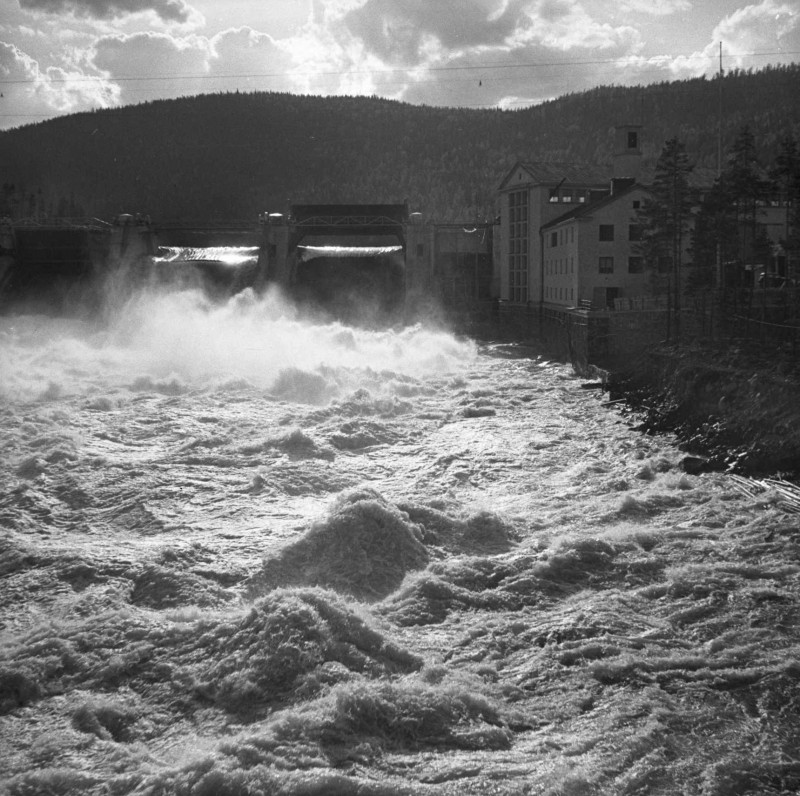
A national grid
For the hydropower generated in Norrland to reach the southern parts of Sweden, a national grid was needed. Vattenfall and private players worked together on this issue. But eventually the Swedish parliament and government decided to give Vattenfall a monopoly on the lines.
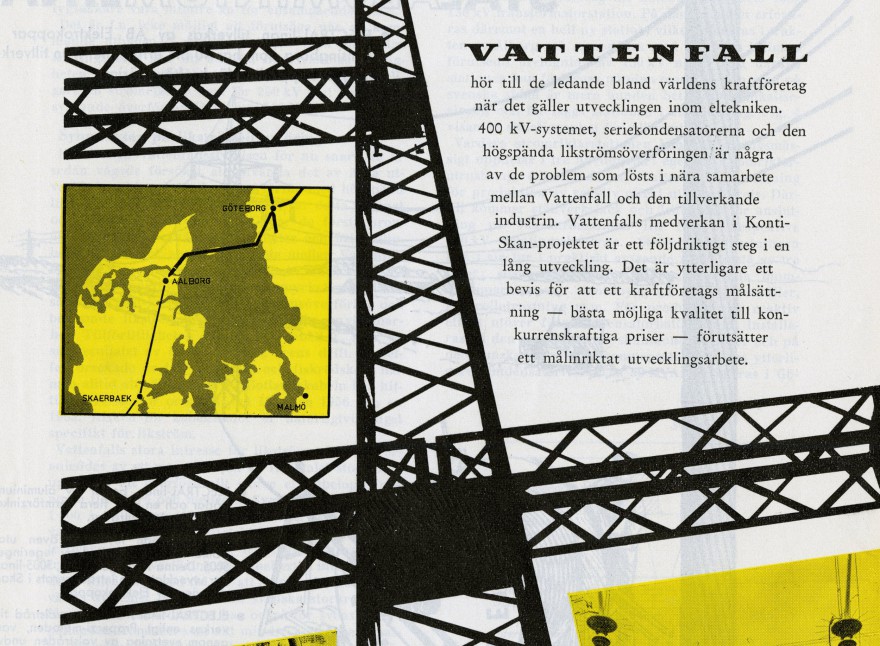
Konti-Skan Year: 1965 | ID: C4_VF001021
In the 1930s, hydropower had become an increasingly important source of Swedish energy supply. In southern and central Sweden, most of the rapids had already been exploited. Interest now turned to Norrland, a region rich in rivers and waterfalls. However, power transmission required a national grid.

Vattenfall's Central Block in 1922 from the book 'Kungliga Vattenfallsstyrelsen 1909-1934'. Year: 1922 | Place: - | Creator: Okänd | ID: VF001044
By this time, the various power companies had their own grids, in geographically defined areas. Vattenfall had two of its own extensive regional systems: Trollhättan and Älvkarleby. These two systems were connected in 1921, via Västerås, using the so-called 'western transmission line' with a record voltage of 130 kV. What came to be known as the 'Central Block' was now established. In the early 1930s, there were still 15 largely independent transmission grids in Sweden. There were still no lines between Norrland and central Sweden.
Secret planning opposed by Vattenfall

Krångede power plant. Year: 1936 | Place: Krångede | Creator: Sven Svidén | ID: VF000064
Vattenfall's competitor Krångedegruppen had built a power station on the river Indalsälven: Krångede. The power from there was transmitted south in 1936 to the transformer station in Horndal via Sweden's first 220 kV line. In a roundabout way, Vattenfall had heard that a third competitor, Sydkraft, had bought into Krångedegruppen. Now Sydkraft was planning a line from Horndal to Nässjö. This would run in parallel to Vattenfall's line from the river Indalsälven. This greatly alarmed Vattenfall's Director General Gösta Malm. He felt that such an important national issue like a transmission grid ought not to be decided in secret. 'It deeply concerns me,' he wrote in his notes.
Therefore, in 1936 Vattenfall requested that a government inquiry look into the continued planning and expansion of the national transmission grid. The inquiry was led by the Director General of the Swedish railways Axel Granholm, the same Granholm who had been in charge of Vattenfall's power plant construction in Porjus a few decades earlier.
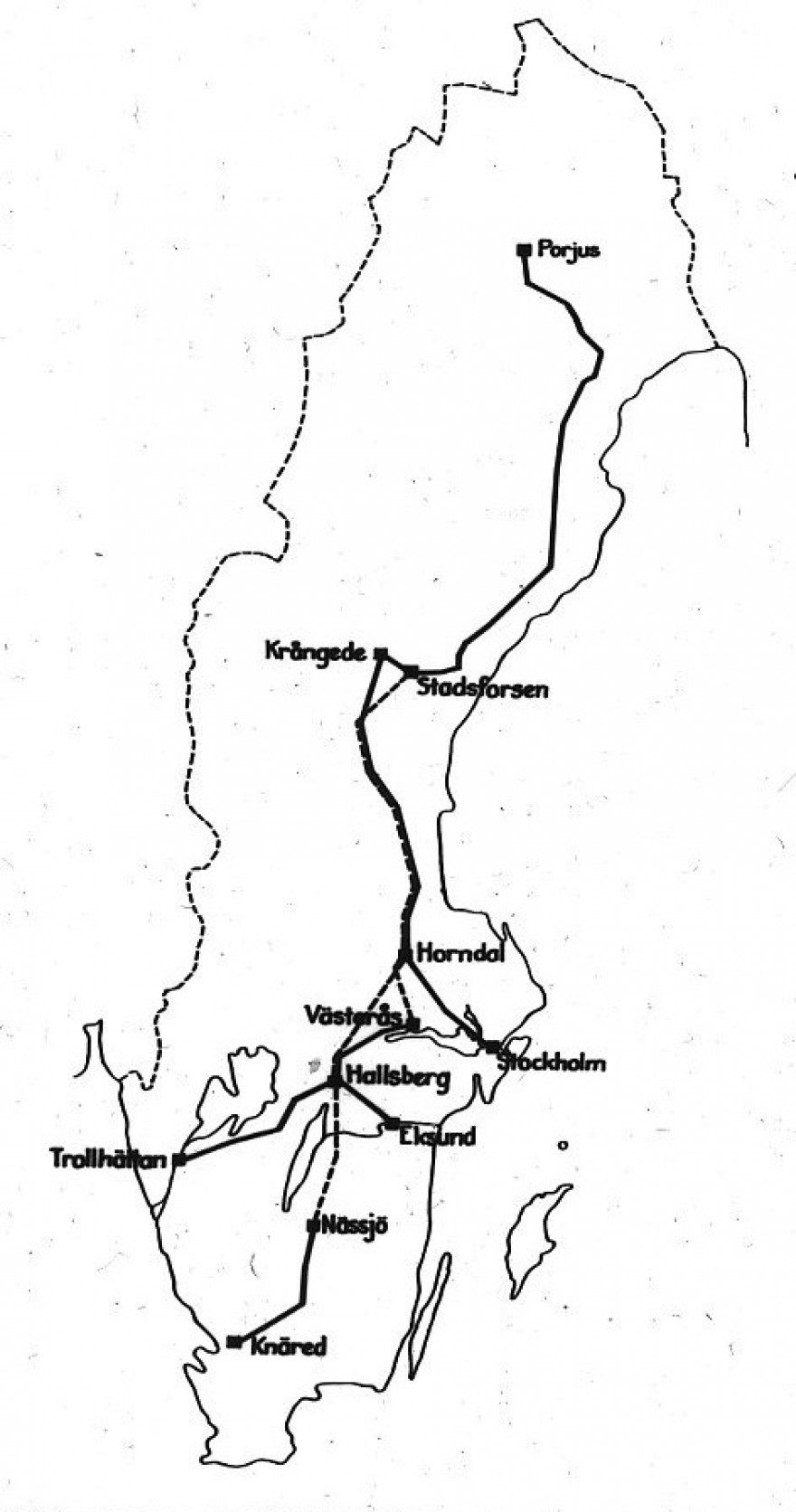
Planned Swedish national grid in 1938. Year: 1938 | Place: - | Creator: Vattenfall | ID: VF000066
The following spring Granholm presented a report and development plan to run until 1960. The power industry now started to cooperate on the grids, and in 1938 the entire grid from Norrbotten to Skåne was jointly operated for the first time.
Granholm's report was based on what some people considered a very optimistic increase in electricity consumption. He estimated that a further two lines, in addition to Krångede's and Vattenfall's (planned for 1939), would be needed south from the river Indalsälven. The plan was for them to be built in 1950 and 1960.
Video player requires marketing cookies.
To view this content please click here to allow marketing cookies.
Building the world's first 400 kV line: Harsprånget - Hallsberg 1000 km (in Swedish)
Quick decisions during the Second World War

Plans in 1937 for the power grid of 1955. As suggested by Krångede-Sydkraft. Year: 1937 | Place: - | Creator: Okänd | ID: VF001058
However, the Second World War upset all those plans. Electricity demand increased dramatically, and the circumstances required quick decisions and rapid implementation. The third line was built as early as 1941-1943, with the fourth following in 1942-1944. Today's grid owners can only dream of such rapid construction.
Following the war, Vattenfall and the rest of the power industry wanted to form a new joint company to take responsibility for continued planning and expansion of the national grid. However, the government and parliament opposed the idea. Instead, in 1945 Vattenfall was awarded a monopoly to construct and own the 220 kV and 400 kV lines. The other power companies were to use the system through a transmission grid agreement.
Expansion of the transmission grid has continued since then. In 1952, the line from Harsprånget was put into operation, with the voltage being increased to 400 kV. A world record. By the late 1960s, there were six separate transmission lines from the river Indalsälven south. There are now 12, the latest completed in 1989.
When Vattenfall was incorporated in 1992, in preparation for the energy market’s deregulation, the national grid was separated from Vattenfall and given to a new public utility, Svenska kraftnät.
Nordic connections
Even our neighbours have been connected to the grid. The first link to Denmark was built under the Öresund between 1914 and 1915. There was no further progress until the 1960s. Towards the end of the decade, transmission capacity had increased to around 2,000 MW, which had doubled ten years later. The capacity has been constantly increasing, mainly thanks to high-voltage direct current technology, or HVDC.
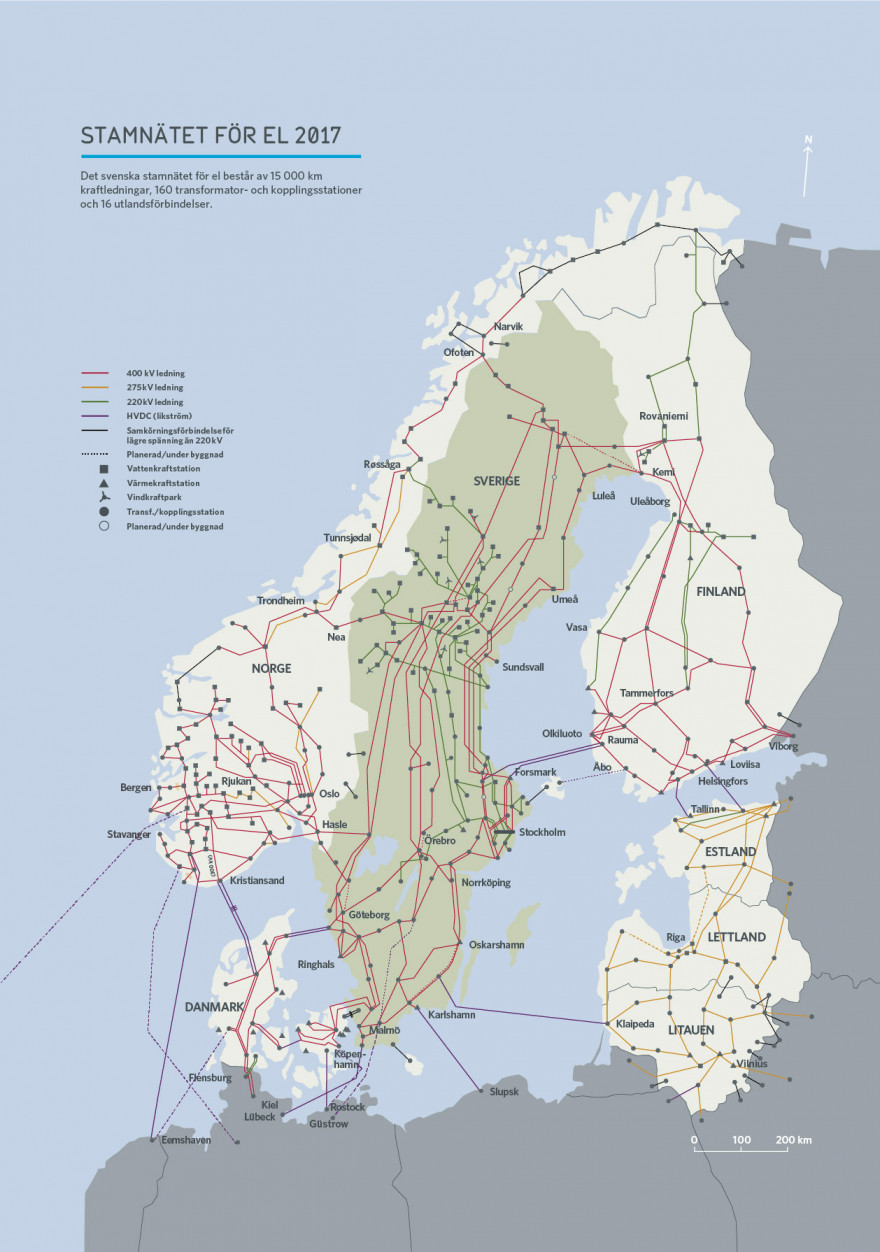
Stamnätet för el 2017. Year: 2017 | Place: - | Creator: Okänd | ID: vf300000
On many occasions the grid has been severely tested. But there have only been two occasions, on 27 December 1983 and 23 September 2003, when the grid has failed completely. It's fair to say that reliability has been very high.
The grid of today
Investments in the grid have increased dramatically since 2010. Greater need for transmission within Sweden, transportion of large amounts of wind power and more international connections are some of the reasons. The Nordic national grid of 2017 is shown on this map:
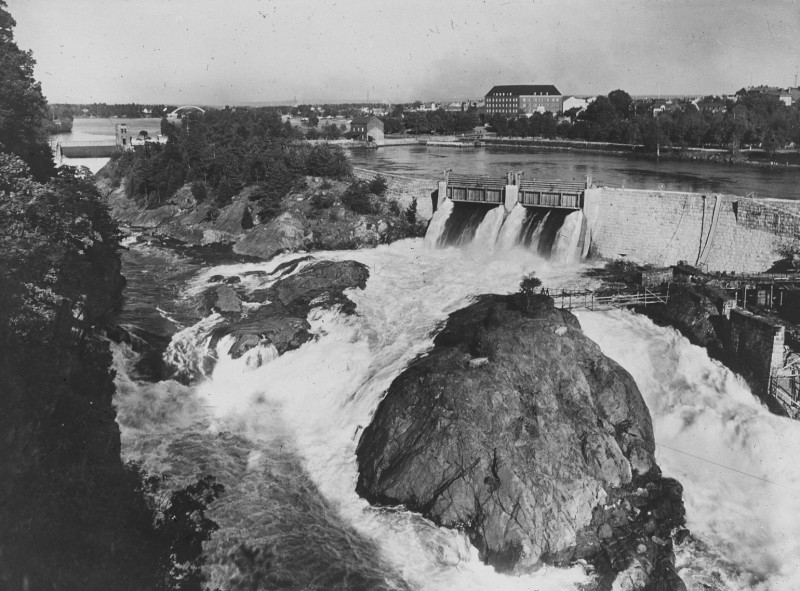
The Toppö falls, Trollhättan. Year: 1938 | Place: Trollhättan | Creator: Vattenfall | ID: VF000062
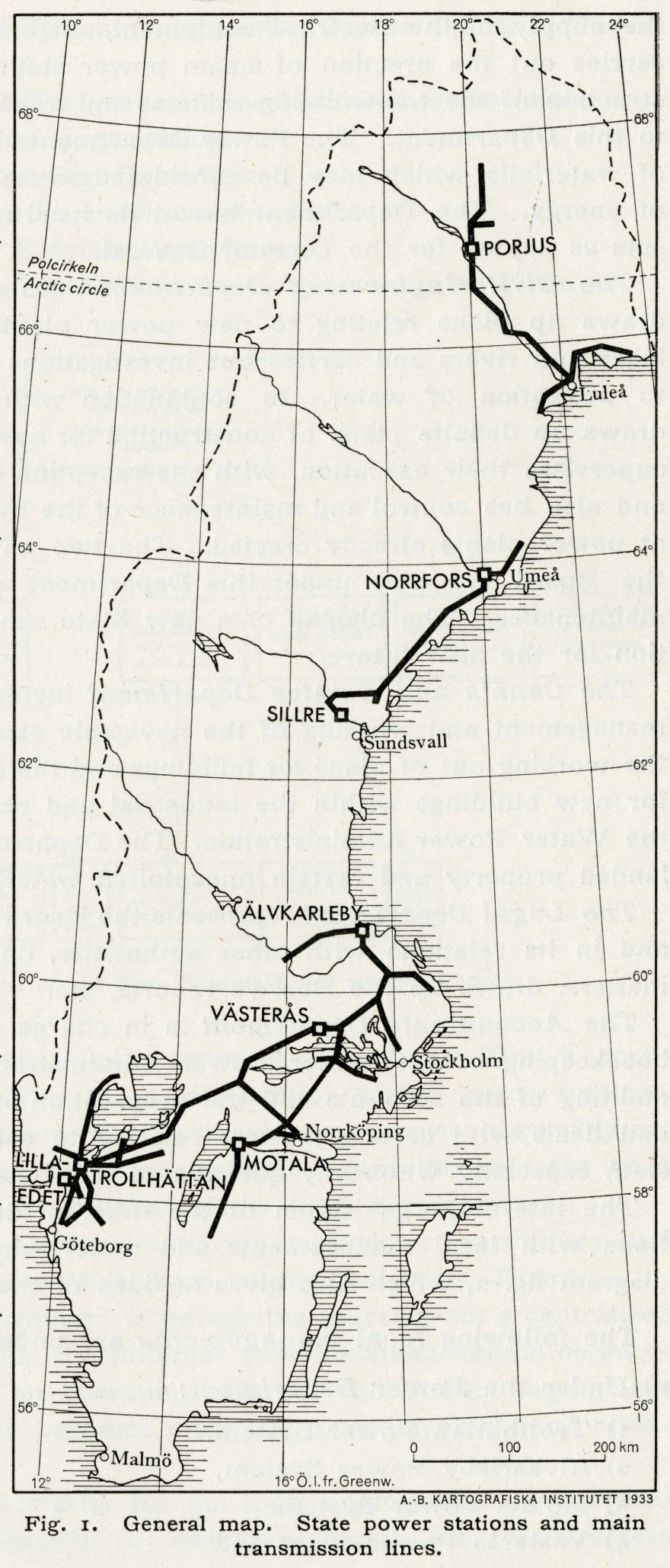
A map of Vattenfall's power stations and main transmission lines in 1933 from the book 'State power plants in Sweden 1933'. Year: 1933 | Place: - | Creator: Okänd | ID: VF001027

Newspaper article about how Sydsvenska Kraft A-B avoided cooperation with Vattenfall From the book 'Vattenfall på Gösta Malms tid: Vattenfall 1928-38 - en krönika av Charlie Cederholm'. Year: 1983 | Place: - | Creator: Okänd | ID: VF001036

